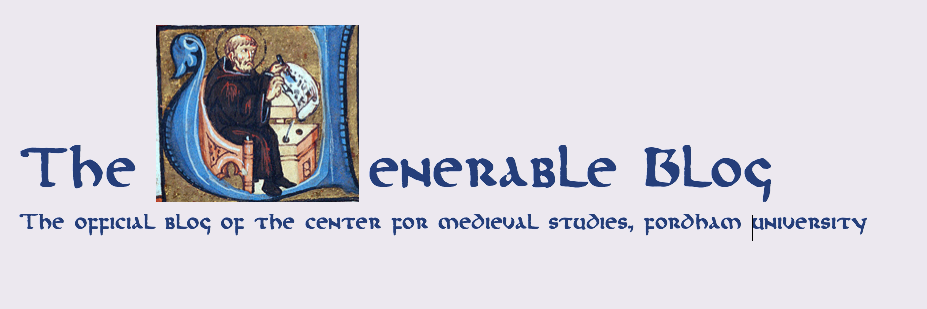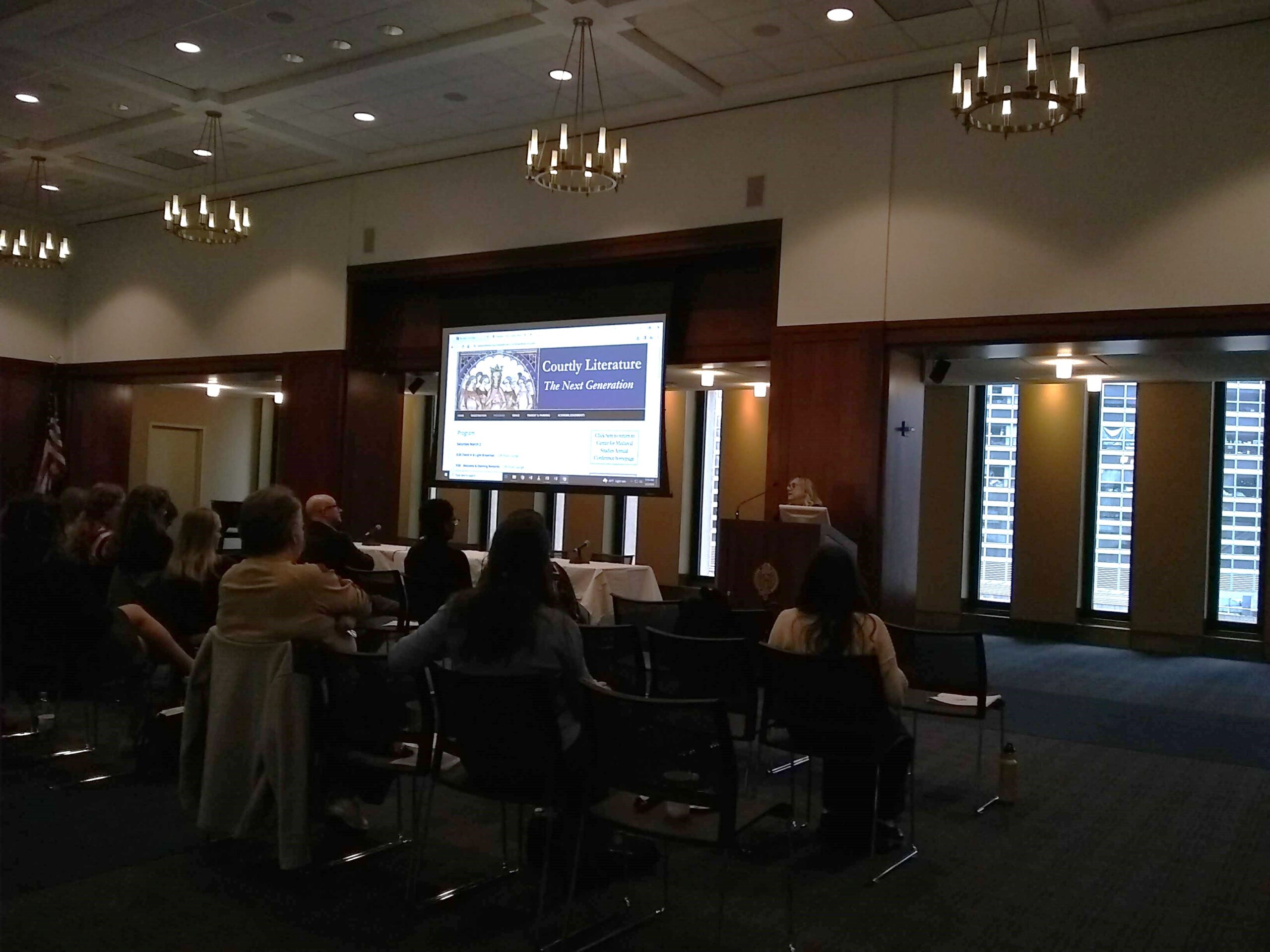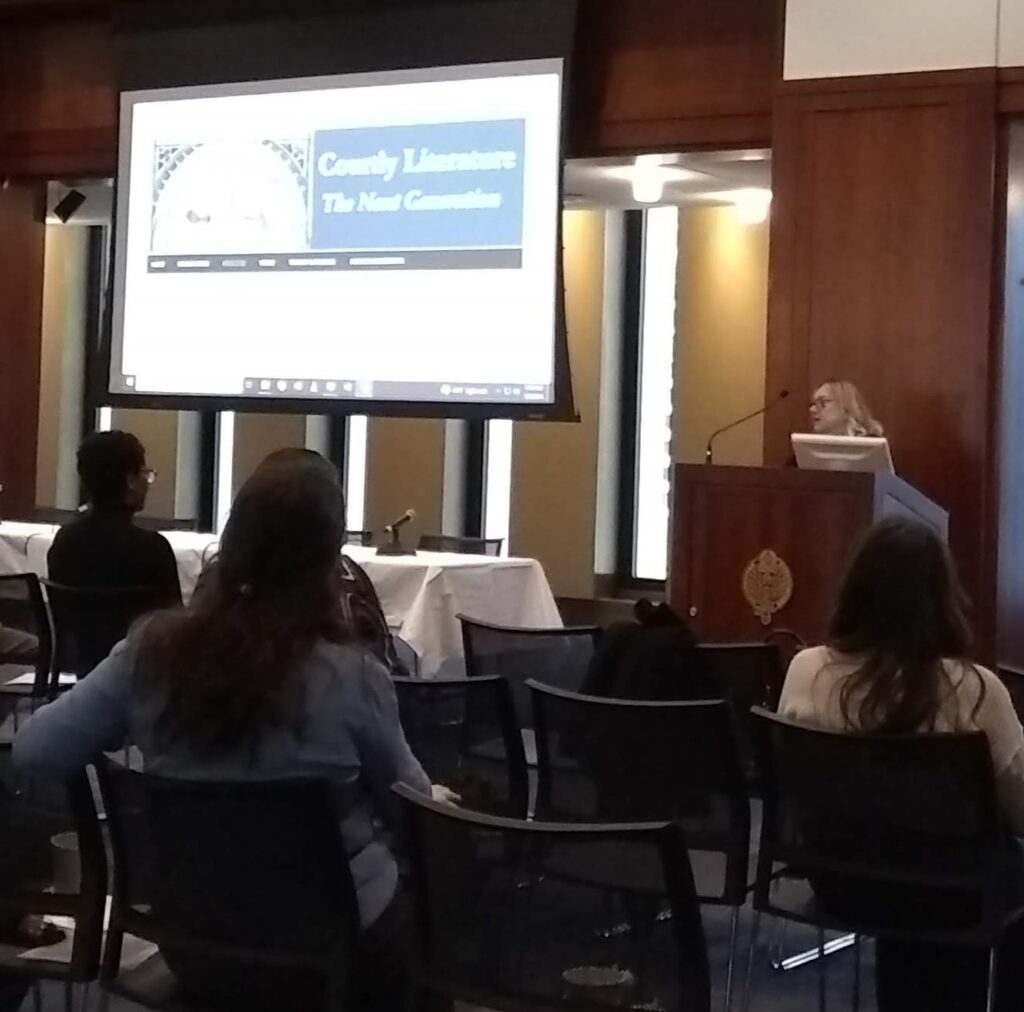
On Mar. 2, 2024, the Center for Medieval Studies hosted its annual conference, with the theme this year being Courtly Literature: The Next Generation. This year’s conference was co-sponsored with the International Courtly Literature Society, with Dr. Susanne Hafner, Assistant Professor of German and President of the International Courtly Literature Society – North American Branch. The conference had the goal of providing the means and platform for junior scholars interested in courtly literature to share their work and learn from others. Presenters received a travel stipend to cover expenses and were paired with a senior scholar mentor with whom they met for mentoring in the days before and after the conference.
Session 1: Adaptation and Inheritance (Emily Varker)
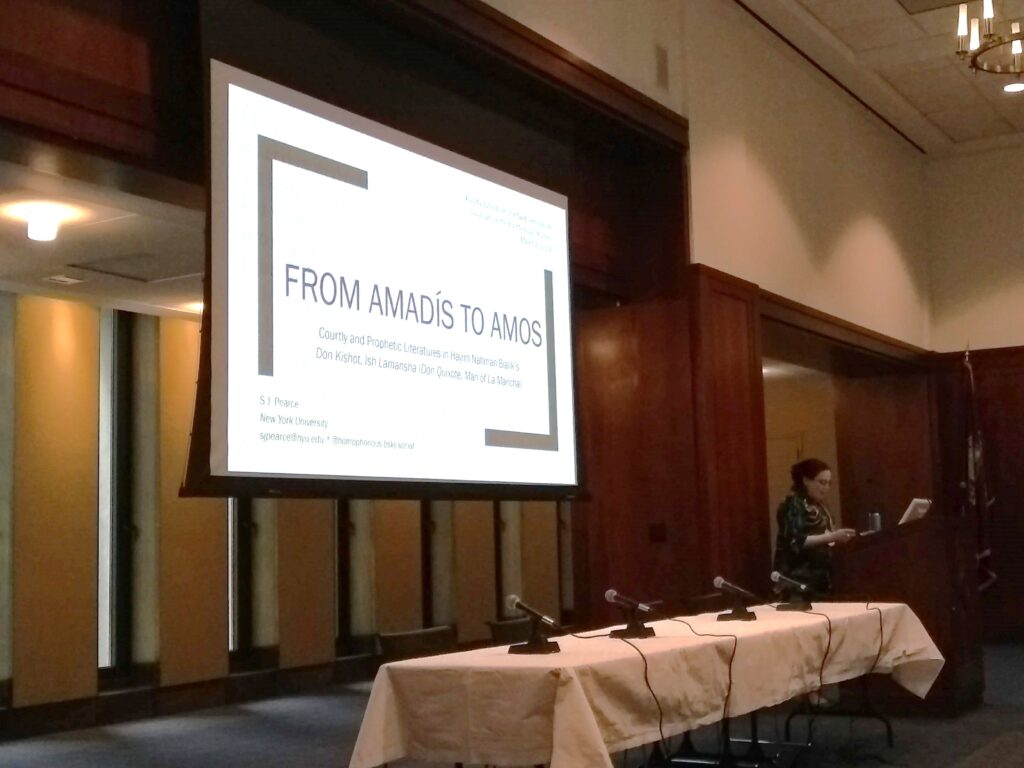
The first presenter of the day was S.J. Pearce from New York University with her paper entitled ““From Amadís to Amos: Courtly and Prophetic Literature in Hayim Nahman Bialik’s Don Kishotte, Ish Lamansha (Don Quixote, Man of La Mancha.)” This paper examined the early 20th century adaptation of Miguel de Cervantes’ famous 17th-century novel into Hebrew, and the removal of precise references to the medieval texts that influenced Quixote’s delusions in the original text.
The second paper was “The Failures of Chivalric Masculinity in 21st-century Caribbean Literature” by Bailey Ludwig from Brandeis University. This paper looked at a selection of poems from Shivanee Ramlochan’s 2017 collection Everyone Knows I Am a Haunting and the medieval imagery that could be found within them.
The third presentation was “‘The Great Good in Her’: the Lady as Saint’s-Wife in a Thirteenth-Century La Vie de Saint Julien” by Leonie Bramwell from the University of Oxford. This paper studied the wife character of a 13th-century hagiography and proved how she subverted expectations of both hagiography and courtly literature by taking on an active, instructive role in her marriage – leading to her husband’s increased holiness.
The final paper of the session was by Rosaleen Montague-Vaughan from the University of Toronto and was entitled “The Effeminate Hero: Gender, Genre, and an Inheritance of Statius.” The paper offered a comparison of Statius’ Achilleid with the 13th century Old French text Le Roman de Silence, focusing mainly on the failed cross-dressing of Achilles with the more successful attempt of Silence.
Session 2: Allegories of Love (Frances Seabrook)
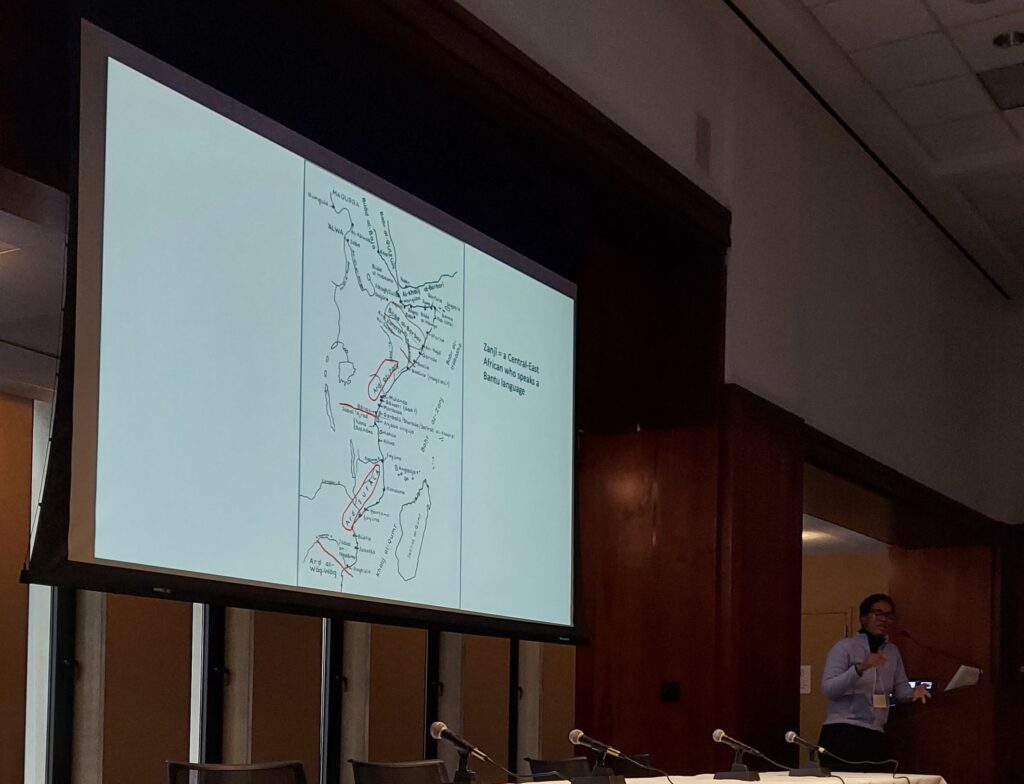
The first presentation, “Allegories of Love: Black Sufi Devotion as Slavery Apologetics in Early Islamic Basra,” was by Kristina Richardson from the University of Virginia. This paper discussed the Zanji, a people group from central East Africa who were enslaved under the Abbasid caliphate, and how their suffering was co-opted by Sufi theology.
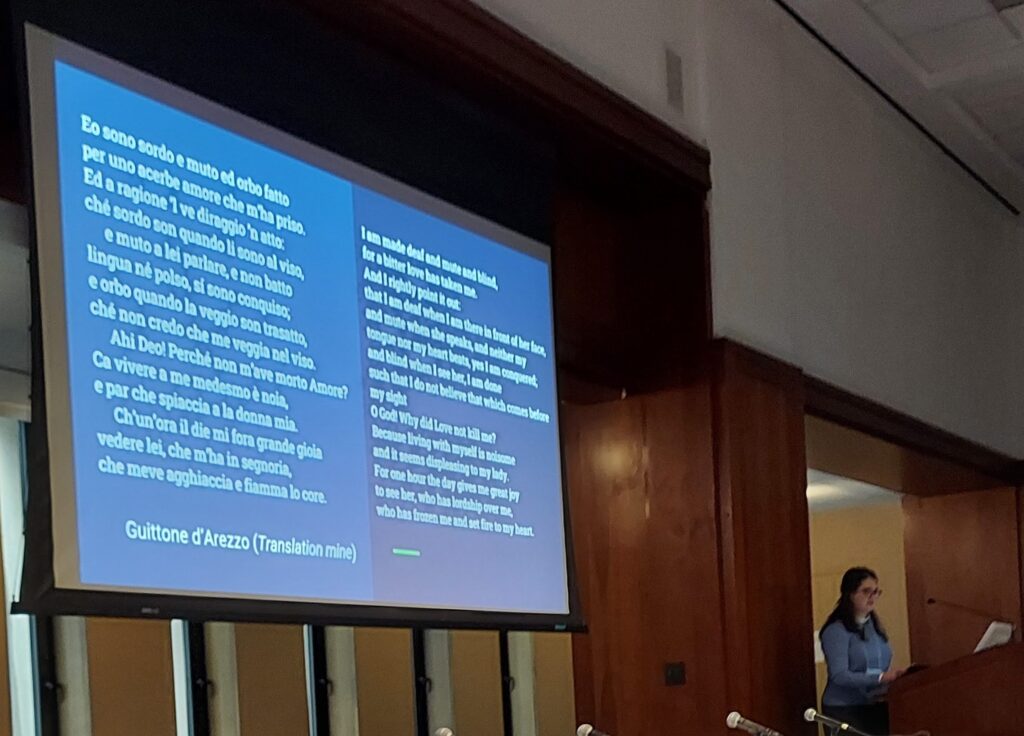
The second presentation, “Love Acquisition and Disability Gain in Guittone d’Arezzo,” was by Catherine Bloomer of Brandeis University. This paper considered the literal and metaphorical meaning behind disability in three poems by Italian writer Guittone d’Arezzo, as well as excerpts from a few other contemporary Italian poets.
The third presentation, “Time as Narrative Structure: How the Conception of Love Shapes the Course of Time in Middle High German Romances,” was by Julia Lorenz from the University of Oxford. This paper examined how “minne,” or courtly love in Middle High German romances, affected characters’ perceptions of linear time.
The fourth presentation, “The Rei the Music Died: Mourning Angevin Kings in Limousin Lyrics,” was by Patrick C. DeBrosse of Fordham University. This paper considered the depiction of Angevin kings in Aquitanian troubadour elegiac lyric, and how this challenges the commonly-held scholarly idea that Angevin rule was weak or ineffective in Aquitaine.
Session 3: Science, Magic, and Time (Elias Holmquist)
Usha Vishnuvajjala from SUNY – New Paltz kicked off Session 3 with her presentation, “Morgan le Fay and the ‘Loathly Lady’ in Middle English Courtly Romance.” This paper meditated upon the portrayal of Morgan le Fay in cinema, contrasting them with her appearances in medieval Arthurian texts, with particular regard to the term, ‘auncian.’ The next speaker, Alicia Haniford from the University of British Columbia, delivered a presentation entitled, “Medieval Automata: Reconstructing Bodies and Imagining Artificial Intelligence Beyond the Court.” This paper studied several machines found in Middle English literature, delving into the manner in which they regulated gender, courtliness, and socio-cultural boundaries through their mechanized functions.
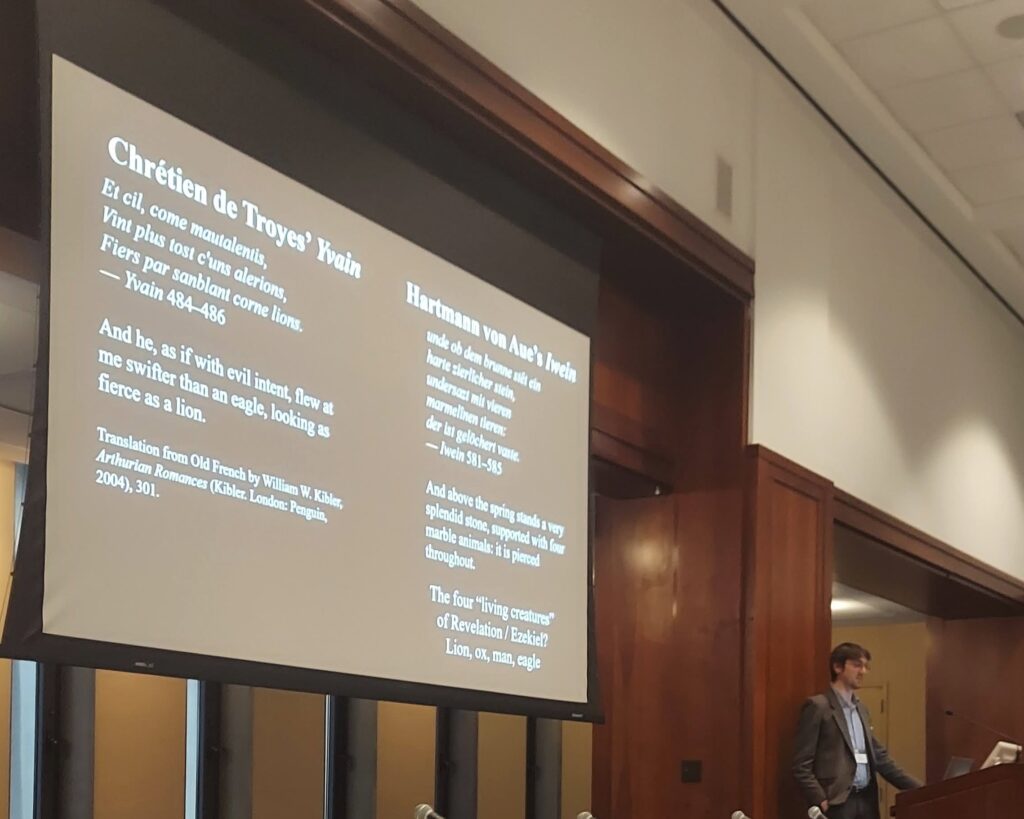
The third presentation, “Astronomical Aspects of Episodic Structure in Medieval German Arthurian Literature,” was delivered by Walker Horsfall of the University of Illinois – Urbana-Champaign. This paper focused on the presence of astronomical templates apparent in chivalric literature, observing the parallels between constellations, planetary bodies, and adaptation of ancient myth within chivalric narratives.
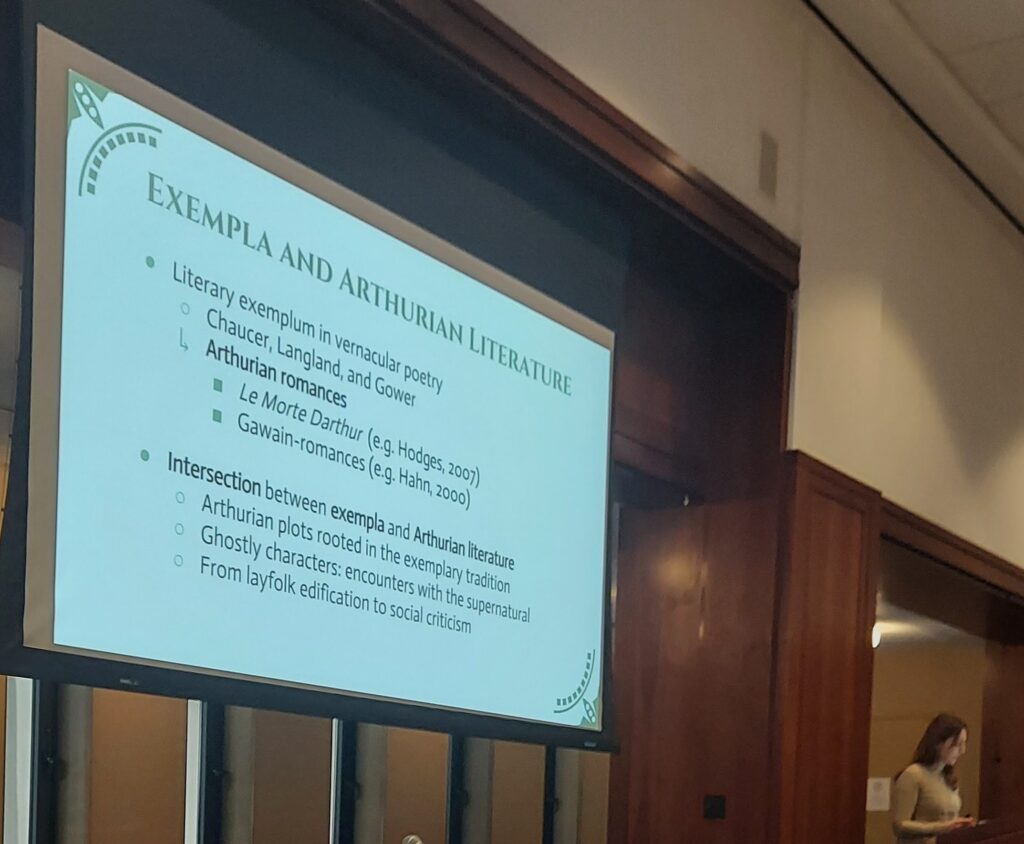
The final speaker of the conference, Lidón Prades Yerves of Universitat Jaume I, delivered the presentation, ““Dreams, Knights, Mothers and Ghosts: The Intersection of Exemplary Tales and Arthurian Romance.” This paper discussed the manners in which ghosts function in exempla and romance, drawing out the nature of their relationship to the protagonists and concluding that the appeal of these stories resonated with a less privileged audience.
